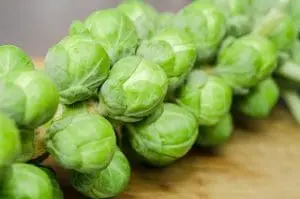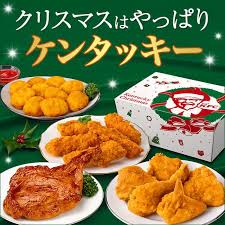Some people might think we in the UK have weird Christmas dinners – but what does everyone else eat?
Most of us know what we are going to have for our Christmas dinner, we might not love all of it *sprouts* but in the UK it is usually roast turkey that we sit down to – that’s not the case for festivity lovers around the world.

We look at weird Christmas dinners around the world – and some may think having sprouts for the meal is weird!
Here, the Christmas.co.uk team takes a look at some of the weird and wonderful Christmas dinners that are being enjoyed around the world on 25th December.
While diners in the UK will be enjoying a moist and delicious roast turkey with a pile of hot, crispy roasties, others will be tucking into their local delicacies – some of which are worth considering and others, for example fried worms, that are certainly not.
Enjoy KFC on Christmas Day. Yes, really.
First up is Japan. It’s hard to believe but a tradition in this country is to enjoy KFC on Christmas Day. That’s right, it’s a finger licking great choice and one which can DEFINITELY get on board with.
 The trend began in 1974 with a marketing campaign called ‘Kentucky for Christmas’ or ‘Kurisumasu ni wa kentakkii’.
The trend began in 1974 with a marketing campaign called ‘Kentucky for Christmas’ or ‘Kurisumasu ni wa kentakkii’.
And since Turkey is a rare meat to find in the country, the population took to the campaign with incredible enthusiasm. So now you can buy a Christmas dinner package that includes a KFC meal, washed down with champagne, followed by cake.
Not only is Christmas Day the restaurant chain’s most profitable day in the Land of the Rising Sun, but Japanese families also need to order their meals months in advance and around four million Japanese families will be doing just that.
Sheep’s head for Christmas dinner
If you’re spending Christmas in Norway for the first time this year, then you need to be prepared for their dish of ‘smalahove’. This translates as sheep’s head and for many people their Christmas dinner table is not complete without this delicacy, particularly in the western parts of the country.
For those who enjoy it, the brain, skin and fur will be removed before the head is salted and then smoked before being dried. It then needs to be steamed or boiled for three hours before being dished up with potatoes and lots of aquavit – an alcoholic drink made from potatoes. Apparently, the ear and eye are eaten first.
If the thought of enjoying a lamb or sheep’s head delicacy will put you off your own Christmas dinner, then consider the Australian alternative.
Since Australians celebrate Christmas in summer, there’s no need to enjoy a comforting warm dish on Christmas Day.
In the hot temperatures, Australians tend to like chilled fruit salads on the big day, including pavlovas to be enjoyed at a Christmas Day barbecue. Others will be tucking into cold meats and cold turkey and seafood.
Eat Chinese food
 For people in the US, Christmas dinner resembles Thanksgiving with turkey as a popular choice – or beef. However, the Jewish community in the States tends to eat Chinese food so restaurants and takeaways will be open on the 25th.
For people in the US, Christmas dinner resembles Thanksgiving with turkey as a popular choice – or beef. However, the Jewish community in the States tends to eat Chinese food so restaurants and takeaways will be open on the 25th.
Previously, we mentioned fried worms and you may think we were pulling your leg. Nope, this really is a thing!
If you’re in South Africa, fat round worms are a sought-after Christmas Day delight in parts of the country along with Zimbabwe and Botswana.
They are called ‘mopane’ and are really the caterpillars of the Emperor moth and they are named after the tree in which the moth will spend most of its life.
The grubs are harvested before winter and then fried to be turned into a popular dish. It is apparently packed with protein and is ‘very tasty’ but it won’t be appearing on any Christmas.co.uk dinner table soon!
Check out our guide to favourite foods around the USA.
Cold rice pudding
Christmas in Denmark usually involves roast pork, cabbage and boiled potatoes, along with a gravy. This is followed with a cold rice pudding served with almonds, cream and a hot cherry sauce. Sounds gorgeous to us!
If you’ve been invited for Christmas dinner with a Danish family and they serve up this pudding, then you need to be aware that there is usually an almond hidden within the dessert. Whoever finds it wins a prize and risks a broken tooth. You have been warned!
Cabbage, particularly cabbage soup is a popular choice in Slovakia, and it’s known as ‘kapustnica’. Slovakians usually have this soup as a starter, along with wafers, garlic and honey.
The main course in Slovakia will tend to be a fish dish along with potato salad. In some areas they will eat a dinner of boiled dumplings and cabbage. As will Poles who tend to use baked codfish – this is a tradition that dates back to the Middle Ages.
In Romania, a popular second course on Christmas Day is a pickled cabbage dish stuffed with meat called ‘sarmale’.
Latvians tend to enjoy lots of pickled vegetables along with pork or lamb followed by tangerines or gingerbread cookies.
Being served a ‘Christmas table’
In Finland and Sweden, you will be served a ‘Christmas table’. That’s a variety of seasonal dishes including ham and fish. Also, on Christmas Eve Finnish families will visit the graveside of a loved one and leave them food for the festivities while in Sweden they enjoy mulled wine called Glogg before and after their meal.
We should highlight also that wafers are particularly popular in several eastern European countries and these are similar to the altar bread that will be used in a Roman Catholic Mass.
If you’re in Lithuania, Poland and Slovakia, then you may be handed a wafer that is embossed with an image of the baby Jesus, the star of Bethlehem or the Virgin Mary.
If you’re travelling in the Philippines, you may be offered a delicacy known as ‘puto bumbong’ which is a rice cake that has been dyed purple before being steamed inside bamboo tubes.
Filipinos also tend to enjoy a spit-roasted suckling pig, though this is the dish used in most major celebrations and is seen as a country’s national dish. It takes a lot of cooking with two people needed to continually stir the pig.
Christmas dinner in Puerto Rico
 Suckling pig is usually the choice of Christmas dinner in Puerto Rico along with pork wrapped in leaves, ham, olives and octopus salad. They enjoy a coconut pudding to finish.
Suckling pig is usually the choice of Christmas dinner in Puerto Rico along with pork wrapped in leaves, ham, olives and octopus salad. They enjoy a coconut pudding to finish.
In Peru, diners will enjoy four dishes, two of which will be turkey along with bacon, stuffing and potato salad. However, the stuffing is made from minced beef, chicken and ham, along with nuts, eggs and olives. Pudding tends to be panettone with hot chocolate.
For those who are in Ghana, Christmas dinner will usually consist of rice balls and a chicken stew. The rice balls take a long time to prepare and some families will eat goat soup with them instead.
Armenians will eat turkey, but not as we know it – it is accompanied by rice, honey and raisins stuffed into a pumpkin.
In Russia, weird Christmas dinners sees grilled chicken and salted fish being served up – along with various salads and mashed potato. The fish is usually dressed herring – and this has various names including the literal translation of ‘herring in a fur coat’.
Fish is popular in the southern parts of Italy including lobster, whiting and sardines. The fish is served with pasta, deep fried kale patties and wine – usually homemade.
Christmas dinner of whale skin complete with blubber
Most of those weird Christmas dinners don’t sound too bad, do they? That’s not the case if you are in Greenland where you might be served whale skin complete with blubber – the dish is called ‘mattak’ just so you know so that you can be making your excuses if someone mentions it.
However, mattak might be the better choice because if you are offered ‘kiviak’ you will be eating raw bird flesh that has been buried in seal skin for several months. This is a delicacy people!
Other choices include soup, fish and barbecued caribou. They also love Danish pastries and men traditionally serve up the food on Christmas Day to women – and some even stir their soup for them!
Talking of nice desserts – head to Provence in France where the traditional Christmas Eve feast with family is followed by at least 13 desserts. That’s 13 different puddings! The feast itself includes smoked salmon, oysters and foie gras.
While many of these dishes are unusual and downright weird – the best part of everyone’s Christmas dinner is that it’s a tradition that is passed down families for them to enjoy. And it’s this sense of belonging and enjoying what other generations have enjoyed that helps to bring us all together and for a family to celebrate their own history with food.





